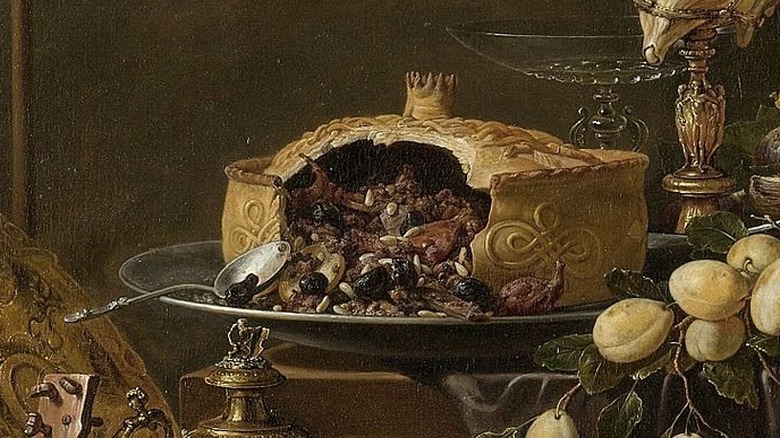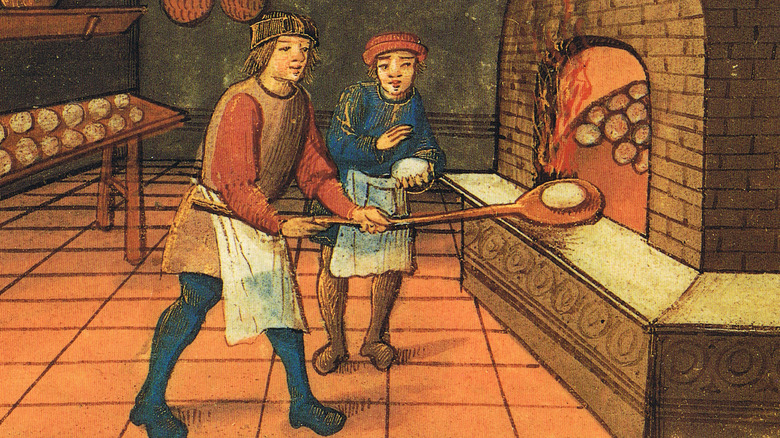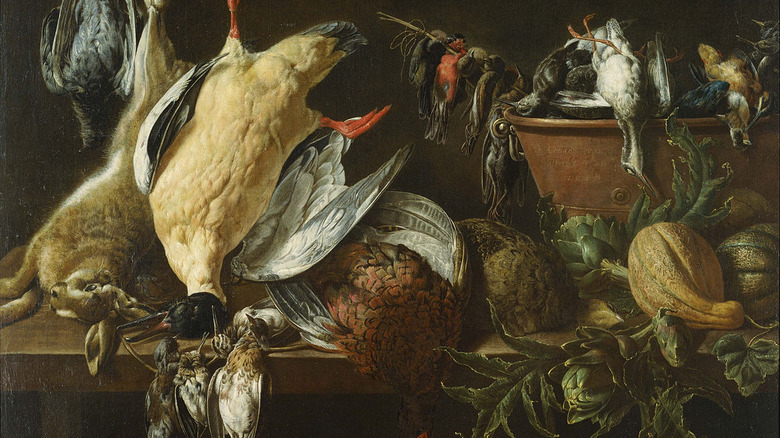Pastry Wasn't Exactly For Eating In The 16th Century
When someone mentions "pastries," the first thing that probably comes to your mind is a spread of flaky croissants, sweet cranberry tarts, and comforting apple pies. We've grown so accustomed to pastries as sweet tasty snacks that it's hard to imagine them serving any other purpose. However, history tells a different story: Pastries weren't always intended to be these delicious treats. In fact, they weren't meant to be eaten at all!
Before the renaissance of pastries from the 16th century onward, pastries — or, more exactly, the dough that's now used to make pastries — had a much more practical role than it does today. Chefs would shape them into inches-thick boxes and use them as disposable cooking vessels and containers for meat fillings and other savory foods. Once used, the charred pastry dough box was thrown away.
Who could've guessed that pastries had such a humble (and rather bizarre) beginning? Here's how pastries evolved from medieval food storage to becoming the beloved treats we enjoy today.
If it's good, 'tis better in a coffyn
The word "pastry" actually didn't appear until the mid-15th century. Before that, it was known by a more peculiar name, according to 14th-century English cookbooks: coffyn (or coffin). In a morbidly amusing twist, a pastry coffyn served the same purpose as a modern coffin; for you to put something inside. In this case, it was pie filling.
In "The Forme of Cury," written in 1390, the master cooks of King Richard II described the steps to make the filling for a "flaumpeyns" (a type of sweet pork mince pie) and mentioned a coffyn: "Then, with another part of the dough, make coffyns and put the mixture inside."
To make a coffyn, you only need flour and water. Ancient cooks would mix them together to form a dough, then knead and shape it until it became a square-shaped box that was several inches thick. Then, they'd use this dough-based box as a vessel for a savory filling. Once baked, the coffyn would become tough and burnt to the point of being nearly inedible, but the filling inside would be moist and fully cooked. The wealthy and noble — the only people at the time with access to pies — would discard the coffyn and eat the fillings inside. Per Terry Breverton in his book "The Tudor Kitchen: What the Tudors Ate & Drank," due to this association with nobility, coffyn-packed pies eventually inspired an Elizabethan saying: "If it's good, 'tis better in a Coffyn!"
What kind of filling is packed into a coffyn?
In medieval times, coffyns were essential for making free-standing pies, also known as "raised pies," often made with meaty ingredients. Acting as a sturdy base, the coffyn supported the pie structure, allowing it to be transported without crumbling.
Typically, coffyns are used to make savory meat pies only. The exact kind of meat depends on what the chef has access to at that time of the year. Historically, pork was the most common choice because it was plentiful. However, if local hunters or the gentry returned with fresh game meat from a successful hunt, then the spoils could be processed and turned into a mixed game meat filling. Veal, venison, and magpie — among other kinds of games — are all good for use as coffyn-stuffers.
Once the meaty mix is prepared, it's carefully packed into the coffyn and baked in an oven. And then, voila, a hearty meat pie! Think of it as an early version of shepherd's pie, but instead of being baked in a dish, the filling is enclosed and supported by the coffyn.


